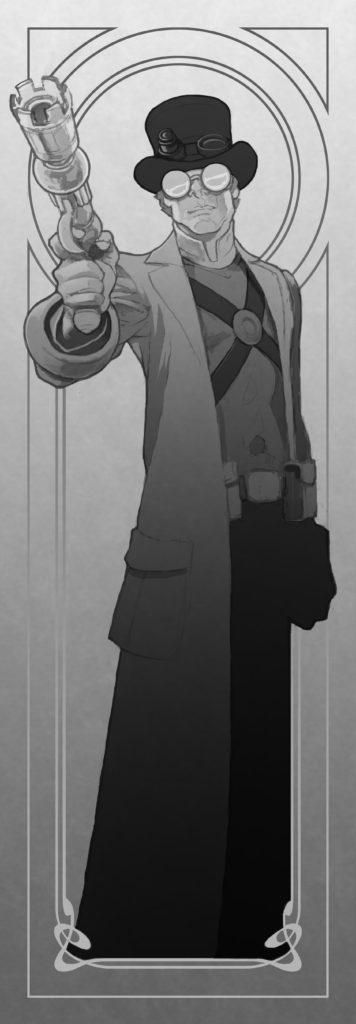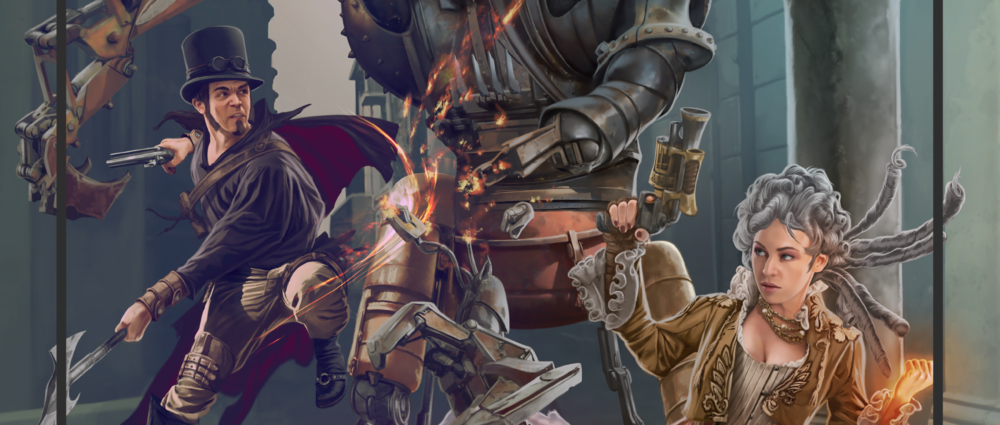
In the Victorious RPG, the setting of the late Victorian period provides an unusual vehicle for the use of that constant of comic book superheroes; namely super-science. What’s the point of having a Contraptionist if they don’t make stuff, right? What’s more, if money is an issue for said Contraptionist, then why don’t they try to sell their inventions to get money for further research?
This has always bugged me in comics. I know that there’s a limit of high tech you can introduce into a world before the tech base increases to the point where it’s no longer recognizable as our world. A relatively few comics such as the Legion of Super-Heroes are based in a world with a much superior tech level to our Earth, but most stay as “modern” so as to provide a familiar frame of reference to the reader.
The Victorious setting is different. Being based in the late Steam Age or early Electrical Age, your inventor can ‘create’ bleeding edge technology that is in truth stuff from the 1930’s or 1940’s. Wireless transmitters, early computers, or even atomic power; all is available if your Genteel Magistrate wishes to go such a route.
Many Steampunk novels do exactly this, with Anti-Ice by Stephen Baxter being one that stands out. In this Victorian era (1850) an odd asteroid has fallen into Earth’s orbit and a chunk of it fell in Antarctica. Without giving away the whole plot, the material is called Anti-Ice and basically allows for nuclear power in time for the Crimean War. This leads to a British use of an Anti-Ice artillery shell on the Russian city of Sevastopol, which results in a Hiroshima-style explosion that ends the war at a stroke in 1859. Twenty years later, Anti-Ice leads to a landship on massive treads that is run by such power, and a launch of an Apollo-style British capsule that ends up planting the Union Jack on the moon, claiming Luna for the British Empire.
As noted, while land-bound luxury liners aren’t common today much of the tech in the book is simply steam and brass extrapolations of modern technology. The WARP series by Eoin Colfer does the same, with time travelers using “modern” tech to try to change the late 19th century. Kady Cross’ Girl in the Steel Corset series even have steam motorcycles and small wireless telegraphs that are basically excuses for texting, and so on.
Another direction that can be taken is more like Michael Moorcock’s Nomads of Time or George Griffin’s Siryn of the Skies books. This has steam and such technology creating worlds of the late 20th and early 21st centuries that are unrecognizable either by modern folks or their Victorian forebears. Worlds with technology based on crystals or solar power that create worlds closer to Superman’s Krypton than a Earth of predictable technologies.
Either way, the sky’s the limit, and at least for heroic Contraptionists the final question becomes “How much radical technology do you introduce in the world?” Of course cures for diseases are great, and so would synthetic textiles and even hydroelectric sources of energy. But are statesmen and military leaders of the 1880’s really ready for the tank? Bomber aircraft? Guided missiles…and atomic bombs? Scientific progress can be a slippery slope, and provide the GM with all sorts of plot hooks to draw heroines into missions they might not want to do, but feel they have to. For instance, Steel Angel’s introduction of high-capacity batteries are being used by the French Third Empire to build massive electrical cannons or massive Taser shells to incapacitate British warships. Would Steel Angel and her fellows feel the need to intervene against the French? Steal the batteries back and try to prevent British businesses from selling them again to Paris? Or would they feel obligated to destroy such cannons or Taser shells wherever they are? What if Tesla improved on the design, creating his infamous “Death Ray” and selling it to the highest bidder?
All this and more await the moral fiber of your heroic characters!
Genteel Magistrate

